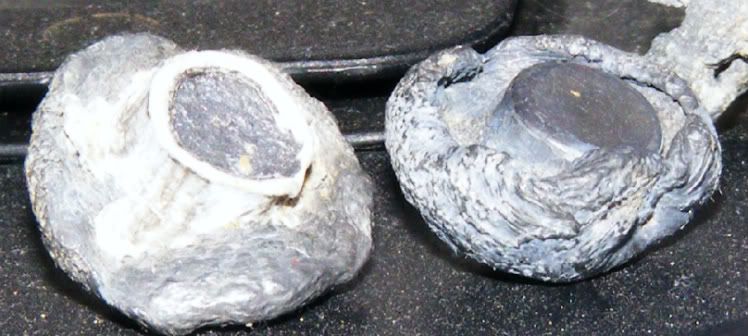I have had such a good time, and such good success with patching my 458 Win Mag that I thought that I would try patching for my Mausers...beside the 8mm uses a LOT less lead and powder! Being a cheap bugger, that is a good thing.
Anyway, I only have one mold that throws in the 0.3245 +/- range and a sizer die to put the gas checks on and fill the lube groove. What to do?
I patched them with three wraps of 25# paper that I had laying around...and it was a dismal failure. They did turn out to be approximately the right size though. I was shooting for 0.312". With further experimenting I found that if I double wrapped with 20# paper, sized - double wrapped with 25# paper, sized - triple wrapped with 25# paper, sized, and I came up with a bullet diameter that closely approximated 0.312" and was a very firm push fit in the bore of one of my Mausers. Eurika! (They are the most out of round things that I've seen in awhile though. By about a thousandth or so.) Lots of work to get ten boolits to patch, and lots of rejects in the process. Luckily, lead melts more than once.
Anyway, I did up ten of them to shoot this weekend. We'll see what happens when I pull the trigger. If the results are promising, I'll invest a little of my scrounged brass money into a 0.312" push through sizing die.
I have another Mauser that has a bore and groove diameter that is a full 0.001" smaller than this, with an almost pristine bore. I shoot cast out of it exclusively with very good results. It's going to be interesting to see if I can work up a paper patched load that will work in both rifles. It would mean going at least 0.001" undersized for one rifle though. It has a really tight / short leade it seems.
Anyway! It's one more thing to play with...

|
   
   
|


|



 Reply With Quote
Reply With Quote





 The difference between the two shown is one had a wheat bran wad. The one that the patch stayed on.
The difference between the two shown is one had a wheat bran wad. The one that the patch stayed on.
 (and wrap'em up!)
(and wrap'em up!)





